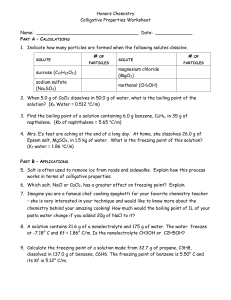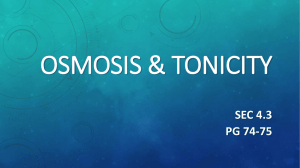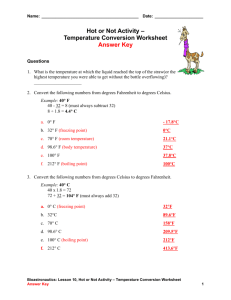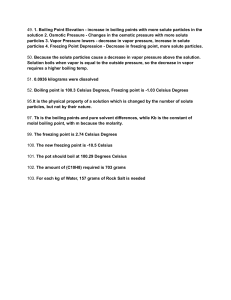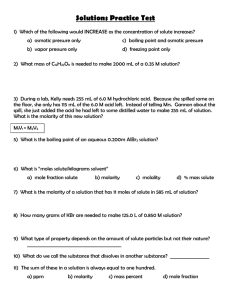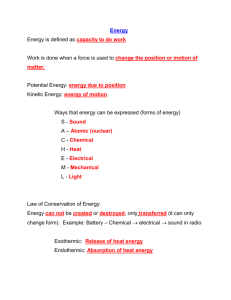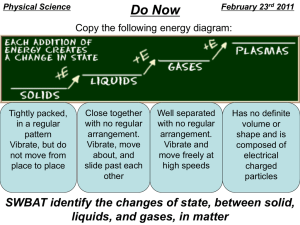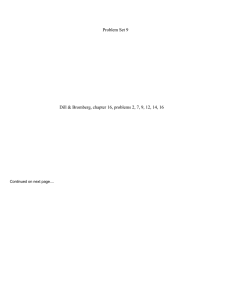CHAPTER 13 LEARNING OBJECTIVES
advertisement
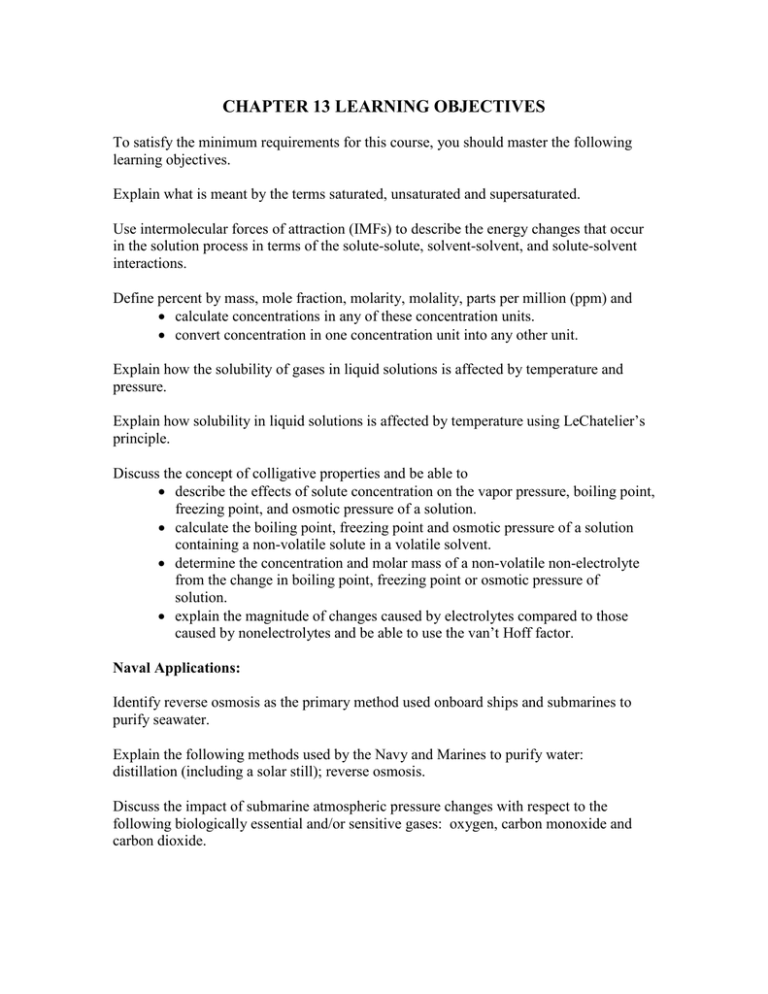
CHAPTER 13 LEARNING OBJECTIVES To satisfy the minimum requirements for this course, you should master the following learning objectives. Explain what is meant by the terms saturated, unsaturated and supersaturated. Use intermolecular forces of attraction (IMFs) to describe the energy changes that occur in the solution process in terms of the solute-solute, solvent-solvent, and solute-solvent interactions. Define percent by mass, mole fraction, molarity, molality, parts per million (ppm) and • calculate concentrations in any of these concentration units. • convert concentration in one concentration unit into any other unit. Explain how the solubility of gases in liquid solutions is affected by temperature and pressure. Explain how solubility in liquid solutions is affected by temperature using LeChatelier’s principle. Discuss the concept of colligative properties and be able to • describe the effects of solute concentration on the vapor pressure, boiling point, freezing point, and osmotic pressure of a solution. • calculate the boiling point, freezing point and osmotic pressure of a solution containing a non-volatile solute in a volatile solvent. • determine the concentration and molar mass of a non-volatile non-electrolyte from the change in boiling point, freezing point or osmotic pressure of solution. • explain the magnitude of changes caused by electrolytes compared to those caused by nonelectrolytes and be able to use the van’t Hoff factor. Naval Applications: Identify reverse osmosis as the primary method used onboard ships and submarines to purify seawater. Explain the following methods used by the Navy and Marines to purify water: distillation (including a solar still); reverse osmosis. Discuss the impact of submarine atmospheric pressure changes with respect to the following biologically essential and/or sensitive gases: oxygen, carbon monoxide and carbon dioxide.


